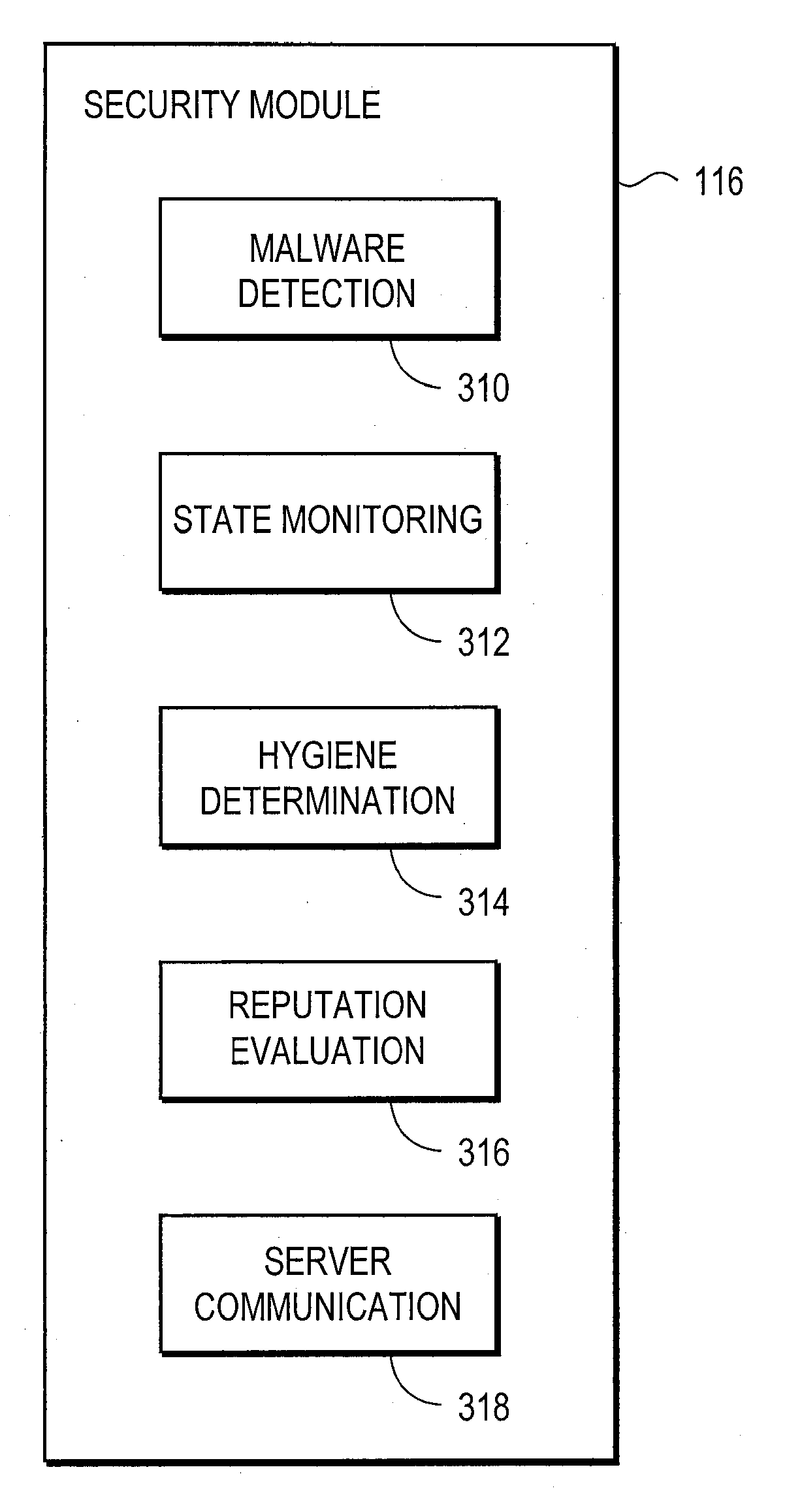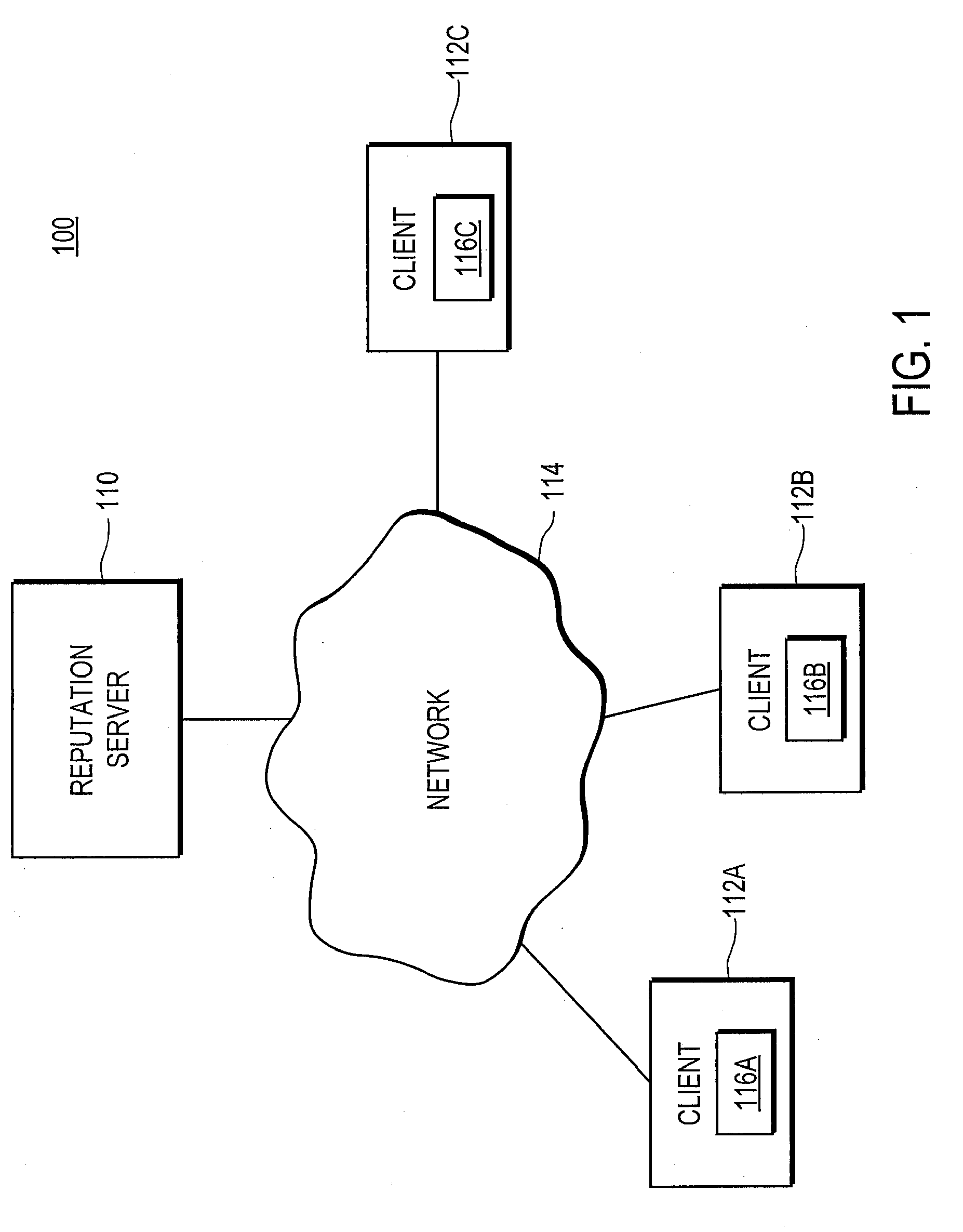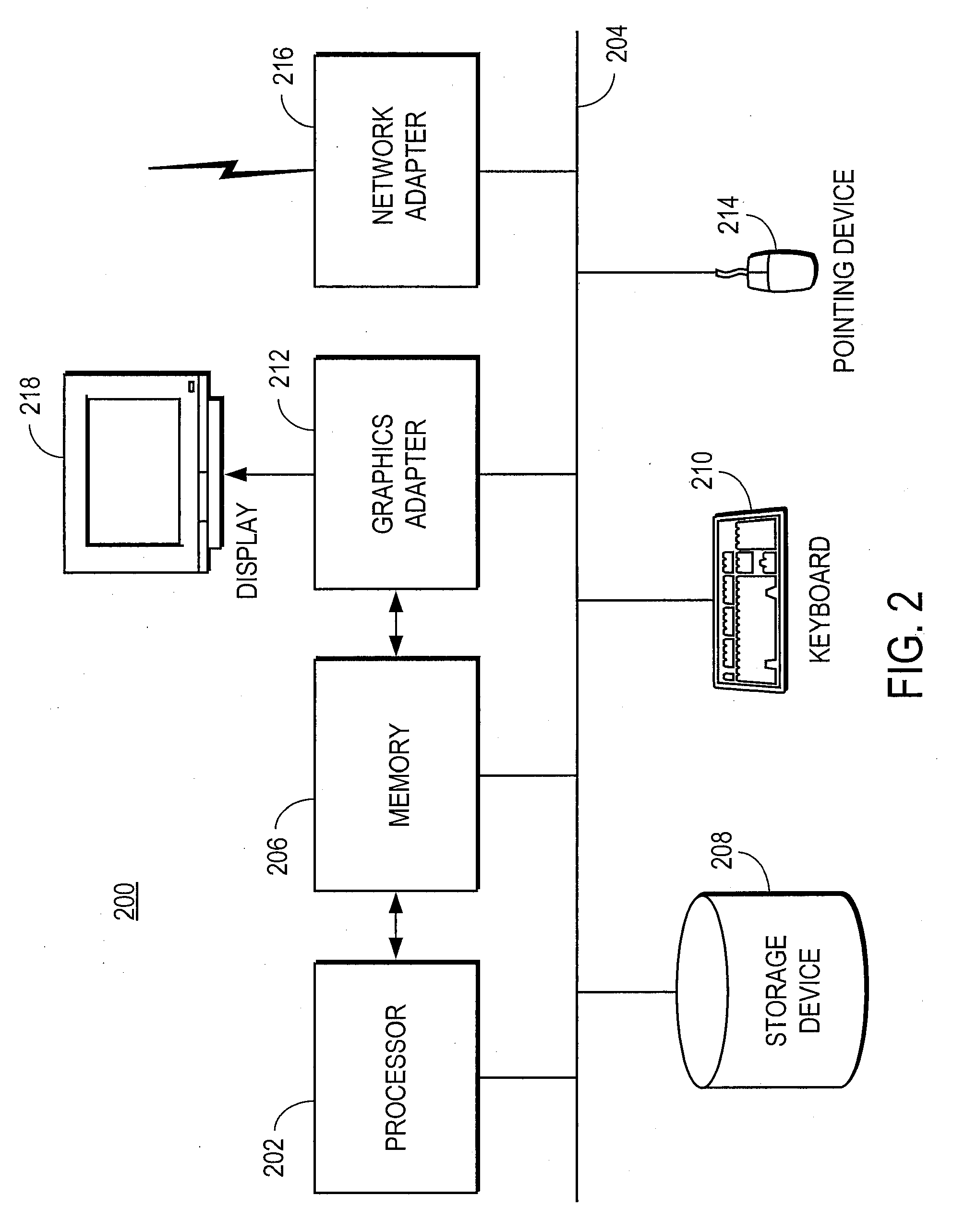Hygiene-Based Computer Security
a computer security and hygiene technology, applied in the field of hygiene-based computer security, can solve the problems of difficult detection of mass-distributed malware, inability to detect and disable mass-distributed malware by conventional security software, and inability to detect targeted threats
- Summary
- Abstract
- Description
- Claims
- Application Information
AI Technical Summary
Benefits of technology
Problems solved by technology
Method used
Image
Examples
Embodiment Construction
[0021]FIG. 1 is a high-level block diagram of a computing environment 100 according to one embodiment. FIG. 1 illustrates a reputation server 110 and three clients 112 connected by a network 114. Only three clients 112 are shown in FIG. 1 in order to simplify and clarify the description. Embodiments of the computing environment 100 can have thousands or millions of clients 112 connected to the network 114.
[0022]FIG. 1 and the other figures use like reference numerals to identify like elements. A letter after a reference numeral, such as “112A,” indicates that the text refers specifically to the element having that particular reference numeral. A reference numeral in the text without a following letter, such as “112,” refers to any or all of the elements in the figures bearing that reference numeral (e.g. “112” in the text refers to reference numerals “112A,”“112B,” and / or “112C” in the figures).
[0023]The reputation server 110 interacts the clients 112 via the network 114. In one emb...
PUM
 Login to View More
Login to View More Abstract
Description
Claims
Application Information
 Login to View More
Login to View More - R&D
- Intellectual Property
- Life Sciences
- Materials
- Tech Scout
- Unparalleled Data Quality
- Higher Quality Content
- 60% Fewer Hallucinations
Browse by: Latest US Patents, China's latest patents, Technical Efficacy Thesaurus, Application Domain, Technology Topic, Popular Technical Reports.
© 2025 PatSnap. All rights reserved.Legal|Privacy policy|Modern Slavery Act Transparency Statement|Sitemap|About US| Contact US: help@patsnap.com



